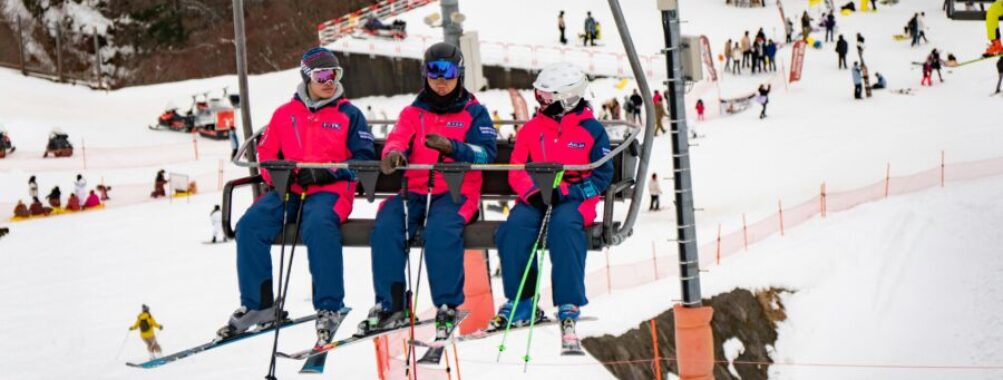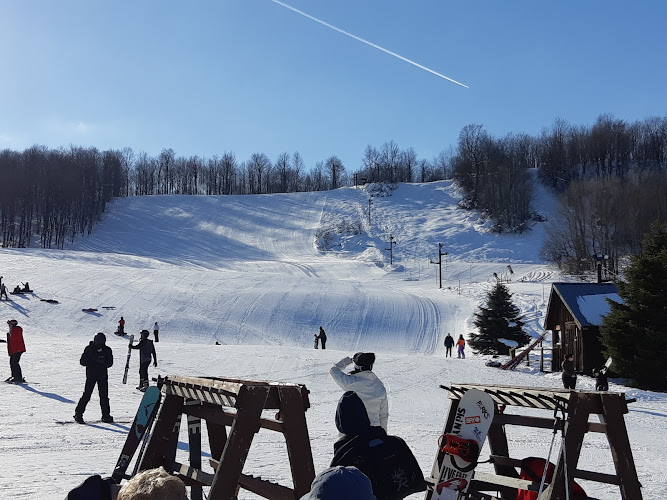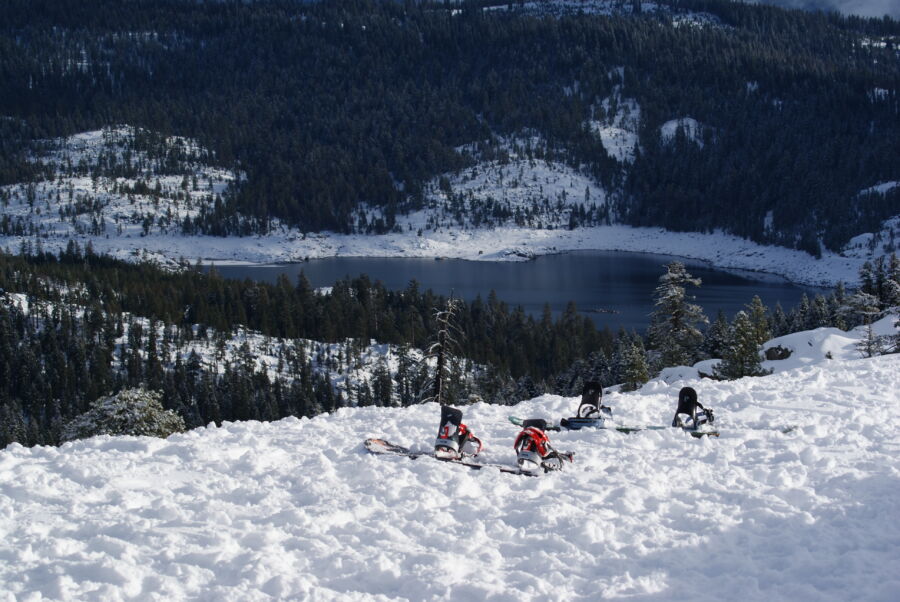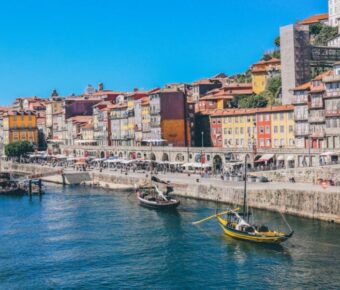
Switzerland Ski Trip Cost: Affordable Alpine Adventure Under $1500
Planning a ski trip to Switzerland? Get ready for an unforgettable winter adventure in the stunning Swiss Alps. But you might be wondering – how much will this dream vacation cost? Let’s break it down.
A ski trip to Switzerland can cost anywhere from $1,500 to $5,000 per person for a week, depending on your choices. This includes flights, accommodation, lift tickets, gear rental, and meals. The good news? You can find ways to save at every step.
Switzerland offers world-class skiing with breathtaking views. But it’s not just about hitting the slopes. You’ll also enjoy cozy chalets, delicious fondue, and charming mountain villages. By planning smart and using some insider tips, you can make your Swiss ski dream a reality without breaking the bank.
Contents
- Key Takeaways
- Overview of Skiing in Switzerland
- Key Attractions and Regions
- Ski Seasons and Peak Times
- Planning Your Trip
- Best Time to Travel
- Choosing Your Ski Resort
- Transportation Options
- Accommodation Choices
- Luxury Lodging
- Affordable Stays
- Cost Analysis of Skiing
- Ski Pass and Lift Ticket Pricing
- Ski Equipment and Lessons
- Daily Expenditure
- Dining and Food Experiences
- Mountain Restaurants
- Local Cuisine
- Additional Activities & Entertainment
- Hiking and Sledging
- Shopping and Relaxation
- Tips and Tricks
- Finding Deals and Discounts
- Budget Planning
- More Travel Guides
Key Takeaways
- Costs vary widely based on resort choice and travel style
- Lift tickets are cheaper than many U.S. resorts
- Look for package deals and off-peak times to save money
Overview of Skiing in Switzerland
Switzerland offers world-class skiing with breathtaking Alpine scenery. The country’s famous resorts blend top-notch slopes with luxurious amenities, though budget options exist too. Ski seasons and popular times vary across different regions.
Key Attractions and Regions
You’ll find some of Europe’s best skiing in Switzerland’s renowned resorts. Zermatt sits at the foot of the iconic Matterhorn, offering year-round glacier skiing and a car-free village. Verbier boasts challenging terrain for advanced skiers and a lively apres-ski scene. St. Moritz, a playground for the rich and famous, features glamorous hotels and high-end shopping.
For a more laid-back vibe, try Engelberg. It’s got great off-piste options and is popular with locals. Grindelwald, part of the Jungfrau region, offers stunning views of the Eiger and family-friendly slopes.
Ski Seasons and Peak Times
The main ski season in Switzerland runs from late November to April. But exact dates depend on snowfall and the resort’s altitude. Higher spots like Zermatt offer skiing almost year-round.
Peak times are usually around Christmas, New Year’s, and February school holidays. Prices spike during these periods, and slopes get crowded. For better deals and fewer people, aim for January or March.
Early December and late April can be hit-and-miss for snow conditions. But you might snag some great last-minute deals if the weather cooperates.
Planning Your Trip

Getting ready for a Swiss ski adventure takes some careful planning. Let’s break down the key elements to consider for your trip to the snowy Alps.
Best Time to Travel
The ski season in Switzerland typically runs from December to April. January and February offer the best snow conditions, but they’re also the busiest and priciest months. If you’re looking to save some cash, try early December or late March. The slopes are less crowded, and you might snag some good deals.
Keep an eye on the weather forecast. Sometimes, early season snowfall can be unpredictable. Late season skiing can be a blast with longer days and warmer temps. Just watch out for slushy conditions in the afternoons.
Remember, Swiss school holidays can make resorts super busy. Try to avoid these times if you want more space on the slopes and shorter lift lines.
Choosing Your Ski Resort
Switzerland’s got tons of ski resorts, so picking one can be tough. Zermatt is famous for its views of the Matterhorn and year-round skiing. It’s pricey, but the runs are amazing. Engelberg is another great option, especially if you’re into off-piste action.
Think about your skill level when choosing a resort. Some places are better for beginners, while others cater to advanced skiers. Also, consider what you want besides skiing. Some resorts have great nightlife, while others are more family-friendly.
Don’t forget about resort size. Bigger isn’t always better. Smaller resorts can be cheaper and less crowded. They’re often great for families or newbie skiers.
Transportation Options
Getting to your Swiss ski resort is pretty easy. Most international flights land at Geneva Airport or Zurich Airport. From there, you’ve got a few choices to reach the slopes.
Trains are a popular option. The Swiss rail system is efficient and scenic. Many resorts have their own train stations, making it super convenient. Bus connections are available for places without direct train access.
Renting a car can give you more flexibility, especially if you’re hitting up multiple resorts. Just be ready for some mountain driving. Cheap car rentals are available, but remember to factor in parking costs at your resort.
Some resorts offer shuttle services from major airports. This can be a comfy option if you don’t want to deal with public transport or driving yourself.
Accommodation Choices

Picking the right place to stay can make or break your Swiss ski trip. Your lodging choice affects both your budget and overall experience.
Luxury Lodging
Want to splurge on a fancy ski vacation? Switzerland has plenty of high-end options. Many luxury hotels offer ski-in/ski-out access, saving you time and hassle. You’ll find spas, gourmet restaurants, and top-notch service. Expect to pay 500-1000 CHF per night for a nice room.
Fancy a private chalet? These offer more space and privacy. Some come with personal chefs and drivers. Prices vary widely, but budget at least 1000 CHF nightly for a group.
Remember, peak season (Christmas to New Year’s) sees the highest rates. Book early to snag the best deals on luxury accommodations.
Affordable Stays
Don’t worry, budget travelers – you’ve got options too! Look for family-run guesthouses in nearby villages. They’re often cheaper and give you a taste of local life. Expect to pay 100-200 CHF per night.
Hostels are another wallet-friendly choice. Some even cater specifically to skiers. You might pay just 50-80 CHF for a dorm bed. The Ski Hostel in Liddes is a great example.
For longer stays, consider renting an apartment. It’s often cheaper than hotels, especially for groups. Plus, you can cook meals to save on food costs.
Cost Analysis of Skiing

Skiing in Switzerland can be pricey, but knowing the costs helps you plan better. Let’s break down the main expenses you’ll face on the slopes.
Ski Pass and Lift Ticket Pricing
Ski passes in Swiss resorts aren’t cheap, but they give you access to amazing slopes. Daily passes usually cost between 60 to 80 Swiss Francs (CHF) for adults. If you’re staying longer, multi-day passes can save you money. A 6-day pass might run you 300 to 400 CHF.
Some places offer early bird discounts if you buy online in advance. And don’t forget to check for family deals – they can cut costs if you’re traveling with kids.
Keep an eye out for resorts that throw in extra perks with your pass, like free bus rides or discounts on rentals. Every little bit helps when you’re trying to stick to a budget!
Ski Equipment and Lessons
Renting gear adds up fast, but it’s often cheaper than lugging your own across the globe. Expect to pay around 30 to 60 CHF per day for a basic ski set (skis, boots, and poles). High-end gear costs more, of course.
If you’re new to skiing or want to brush up on your skills, factor in lesson costs. Group lessons are more wallet-friendly, ranging from 60 to 100 CHF for a half-day. Private lessons cost more but give you one-on-one attention.
Pro tip: Some shops offer discounts if you rent for multiple days. And if you’re staying a while, season-long rentals might be worth looking into.
Daily Expenditure
Your daily spend goes beyond just hitting the slopes. Food on the mountain can be steep – a simple lunch might set you back 20 to 30 CHF. Packing snacks can help cut costs.
Don’t forget about apres-ski! A beer or hot chocolate after a long day of skiing might cost 5 to 10 CHF.
Transportation to and from the slopes is another expense to consider. Some resorts offer free shuttle services, but others might charge for bus or train rides.
Lastly, factor in some cash for unexpected expenses like locker rentals or buying a new pair of gloves if yours get soaked. It’s always good to have a buffer in your budget for these little surprises.
Dining and Food Experiences

Swiss ski trips offer mouthwatering food options both on and off the slopes. You’ll find a mix of hearty mountain fare and gourmet cuisine to fuel your adventures.
Mountain Restaurants
Ski resorts in Switzerland have plenty of on-mountain dining spots. You can grab a quick bite at casual mountain huts or sit down for a nice meal with amazing views. Prices tend to be higher than in town, but the convenience is worth it.
A simple lunch of soup and bread might cost around $15-20. For a full meal with drinks, expect to pay $30-50 per person. Some spots offer self-service to keep costs down.
Try local specialties like rösti (crispy potato pancakes) or älplermagronen (alpine macaroni). Hot chocolate is perfect for warming up on chilly days.
Local Cuisine
Back in the village, you’ll find lots of cozy restaurants serving traditional Swiss food. Fondue and raclette are classics – melted cheese dishes perfect after a day of skiing. A fondue dinner for two usually runs $50-80.
Other local dishes to try:
• Älplermagronen – pasta with cheese, potatoes, and onions
• Zürcher Geschnetzeltes – sliced veal in cream sauce
• Bündner Nusstorte – sweet nut tart
Grocery stores and bakeries offer cheaper meal options. You can pick up sandwiches, pastries, and snacks to save money. Some lodges have kitchens where you can cook your own meals too.
For a special night out, look for restaurants with Michelin stars or Gault Millau points. A fancy dinner could cost $100+ per person, but the food is amazing.
Additional Activities & Entertainment

Your Swiss ski trip offers more than just hitting the slopes. You can explore breathtaking scenery and enjoy fun activities off the mountain too.
Hiking and Sledging
Winter hiking trails let you soak in stunning Alpine views without ski gear. Many resorts have marked paths that are safe and easy to follow. Bring sturdy boots and warm layers. Sledging is another fun option to try. Rent a sled for about 15-20 Swiss francs per day. Some resorts have dedicated sledge runs with lifts. It’s a great activity for all ages.
The Swiss Alps have countless scenic trails to explore. You might spot wildlife like ibex or chamois. Pack a picnic lunch to enjoy at a lookout point. Remember to check trail conditions before heading out.
Shopping and Relaxation
Swiss resort towns offer charming shops and spas for your days off the slopes. You can browse local boutiques for unique souvenirs or designer ski gear. Many towns have weekly markets with fresh foods and handmade crafts. Treat yourself to famous Swiss chocolate or a new watch.
For relaxation, you can book a massage or visit a thermal spa. Spa entry prices start around 50-100 francs. Some hotels have their own wellness areas included in your stay. Unwind in a sauna or hot tub with mountain views. You can also find yoga classes in some resorts if you want to stretch out after skiing.
Book spa treatments and activities ahead of time to get the best rates. Look for package deals that combine multiple activities for savings.
Tips and Tricks

Skiing in Switzerland can be pricey, but with some smart planning, you can save big bucks. Here are some insider tips to help you cut costs without sacrificing the fun.
Finding Deals and Discounts
Look for package deals that bundle lift tickets, lodging, and equipment rental. These can often save you 20-30% compared to booking everything separately. Check resort websites for early bird specials. Buying your lift tickets a few months in advance can knock off 10-15%.
Don’t overlook smaller, less famous resorts. Places like Aletsch Arena or Savognin offer great skiing at much lower prices than Zermatt or St. Moritz. Mid-week skiing is usually cheaper too. Some resorts offer discounted passes for afternoon-only skiing if you don’t mind a late start.
Consider buying a multi-day pass instead of single-day tickets. The per-day cost drops significantly for longer passes. And don’t forget to ask about group discounts if you’re traveling with friends or family.
Budget Planning
Start by setting a realistic budget for your trip. Factor in all costs: travel, lodging, food, lift tickets, and equipment.
Booking your trip during the shoulder season (early December or late March) can save you a bundle on both flights and accommodations.
Look for budget-friendly lodging options like hostels or vacation rentals. Cooking some of your own meals can cut food costs dramatically. Pack lunches to eat on the slopes instead of paying resort prices.
Consider renting equipment instead of buying if you don’t ski often. Many rental shops offer discounts for multi-day rentals. Also, check for student, senior, or military discounts if you qualify.



